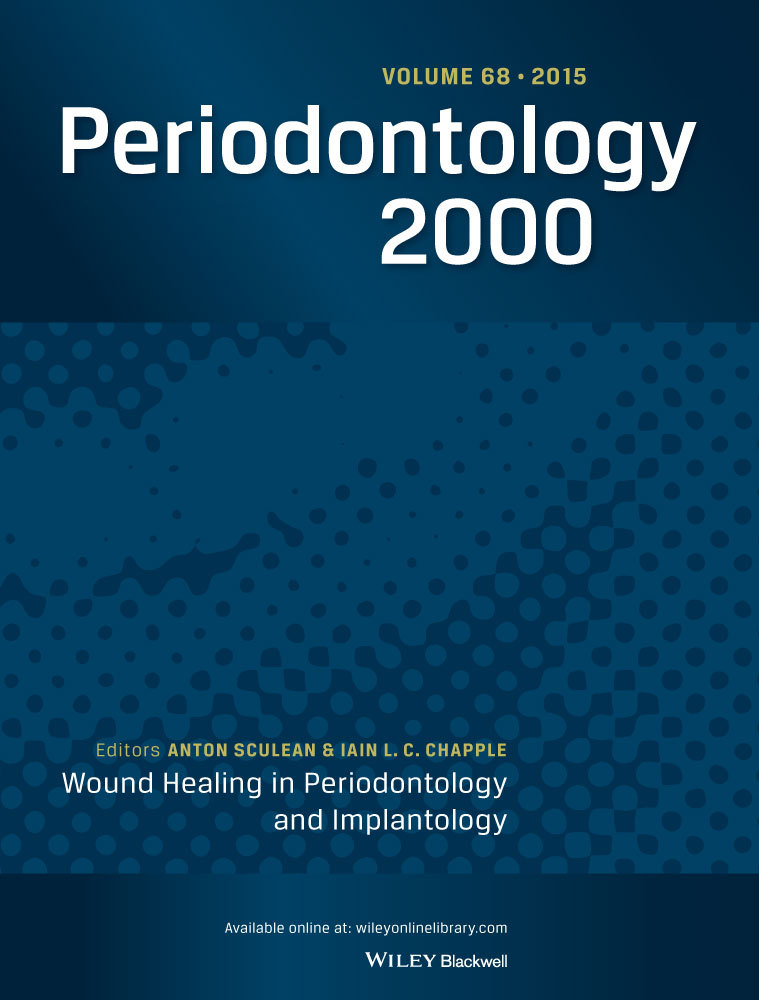Strategic approaches in oral squamous cell carcinoma diagnostics using liquid biopsy
IF 17.5
1区 医学
Q1 DENTISTRY, ORAL SURGERY & MEDICINE
引用次数: 0
Abstract
Liquid biopsy is a noninvasive diagnostic technique used for monitoring cancer utilizing specific genetic biomarkers present in bodily fluids, such as blood, saliva, or urine. These analyses employ multiple biomolecular sources including circulating tumor DNA (ctDNA), circulating tumor cells (CTCs), and exosomes (that contain DNA fragments) to detect genetic biomarkers that can predict, disclose, and/or monitor cancers. Levels of these biomarkers can inform on the presence of cancer, its genetic characteristics, and its potential treatment response and also provide predictive genetic predisposition information for specific cancers including oral squamous cell carcinomas (OSCC). Liquid biopsies can aid cancer management as they offer real‐time dynamic information on the response to say chemotherapy or radiotherapy and recurrence following surgical excision. Unlike traditional tissue biopsies, which are invasive with a degree of morbidity and require specific tumor location sampling, liquid biopsies are noninvasive and can be repeated frequently. For oral squamous cell carcinoma, on which this review focuses, liquid biopsy of blood or saliva can be valuable in predicting susceptibility, providing early detection, and monitoring the disease's progression and response to therapy. This review gives a general narrative overview of the technology, its current medical usage, and advantages and disadvantages compared with current techniques and discusses a range of current potential biomarkers for disclosing OSCC and predicting its risk. Oral squamous cell carcinoma is all too often detected in the late stages. In future, liquid biopsy may provide an effective screening process such that cancers including OSCC will be detected in the early stages rather than later when prognosis is poor and morbidity and debilitation are greater. In this screening process, periodontists and hygienists have a critical role in that they are adept in examining mucosa, they see patients with shared risk factors for periodontitis and OSCC, namely smoking and poor oral hygiene, and they see patients frequently such that OSCC examinations should be a routine part of the recall visit. With this additional screening manpower, oral medicine and oral surgery colleagues will detect OSCC earlier and this coupled with new techniques such as liquid biopsy may greatly decrease global morbidity in OSCC.利用液体活检诊断口腔鳞状细胞癌的战略方法
液体活检是一种非侵入性诊断技术,利用血液、唾液或尿液等体液中的特定基因生物标记物监测癌症。这些分析采用多种生物分子源,包括循环肿瘤 DNA(ctDNA)、循环肿瘤细胞(CTC)和外泌体(含有 DNA 片段),以检测可预测、揭示和/或监测癌症的基因生物标记物。这些生物标记物的水平可以告知癌症的存在、其遗传特征及其潜在的治疗反应,还可以提供包括口腔鳞状细胞癌(OSCC)在内的特定癌症的遗传易感性预测信息。液体活检有助于癌症的治疗,因为它们能提供有关化疗或放疗反应以及手术切除后复发情况的实时动态信息。与传统的组织活检不同,液体活检是非侵入性的,而且可以经常重复。对于本综述重点讨论的口腔鳞状细胞癌,血液或唾液的液体活检在预测易感性、提供早期检测、监测疾病进展和对治疗的反应方面具有重要价值。本综述概述了该技术的总体情况、目前的医疗用途以及与现有技术相比的优缺点,并讨论了目前用于揭示 OSCC 和预测其风险的一系列潜在生物标记物。口腔鳞状细胞癌往往在晚期才被发现。今后,液体活检可能会提供一种有效的筛查方法,使包括 OSCC 在内的癌症在早期阶段就能被发现,而不是在预后较差、发病率和衰弱程度较高的晚期才被发现。在这一筛查过程中,牙周病学家和卫生学家发挥着至关重要的作用,因为他们擅长检查粘膜,他们接诊的患者具有牙周炎和 OSCC 的共同风险因素,即吸烟和口腔卫生不良,而且他们经常接诊患者,因此 OSCC 检查应成为复诊的常规项目。有了这些额外的检查人手,口腔内科和口腔外科的同事就能更早地发现 OSCC,再加上液体活检等新技术,就能大大降低 OSCC 的总体发病率。
本文章由计算机程序翻译,如有差异,请以英文原文为准。
求助全文
约1分钟内获得全文
求助全文
来源期刊

Periodontology 2000
医学-牙科与口腔外科
CiteScore
34.10
自引率
2.20%
发文量
62
审稿时长
>12 weeks
期刊介绍:
Periodontology 2000 is a series of monographs designed for periodontists and general practitioners interested in periodontics. The editorial board selects significant topics and distinguished scientists and clinicians for each monograph. Serving as a valuable supplement to existing periodontal journals, three monographs are published annually, contributing specialized insights to the field.
 求助内容:
求助内容: 应助结果提醒方式:
应助结果提醒方式:


